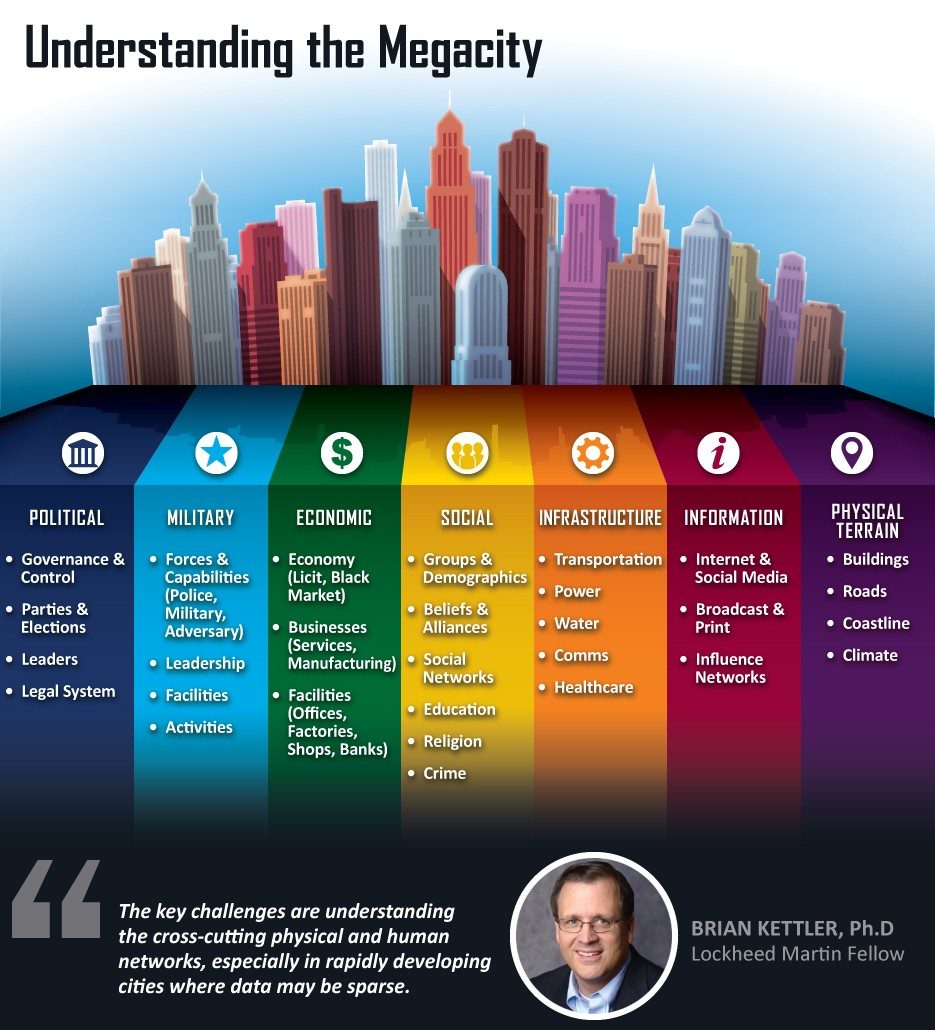Today, almost five billion people live in urban areas, and more than half of all people in the world live in cities. And the number is growing.
By 2030, cities will account for 60 percent of the world’s population.
Megacities – cities with a population greater than 10 million – are increasingly emerging, with over three dozen in the world today, such as New York City, New York; Bangkok, Thailand; and Cairo, Egypt.
Trying to manage the expansion of megacities presents challenges for governments, businesses and policymakers as they look for new ways to support the needs and safety of the people, develop sustainable infrastructures, and enable economic growth and stability.
To better serve citizens and mitigate risks, Lockheed Martin is developing new technologies to understand the inner workings of these massive cities and predict the impact of events and actions on them.
Why Do Megacities Matter?
As the world becomes more globalized and cities grow in complexity, the capabilities and interdependence of a city’s infrastructure, economy, political and governmental services, police and first responders must be understood for leaders to prepare for the future.
And due to their scale, megacities are not always well equipped to address rapid growth or counter unexpected events, such as disease outbreaks and man-made or natural disasters.

Lockheed Martin Fellow Dr. Brian Kettler envisions a world where information from a variety of sources can be combined to understand and model the intertwined political, military, economic, social, infrastructure and information aspects of any megacity.
“The key challenges are understanding the cross-cutting physical and human networks, especially in rapidly developing cities where data may be sparse,” explains Dr. Kettler. “Our experience in multi-source data collection, integration and predictive modeling will help us understand the diversity of megacities.”
Lockheed Martin is currently building a greater understanding of megacities with a collection of open source data, including news reports, social media, and published studies, as well as terrain models, street maps, building schematics, and air, rail and waterway pathways.
In the future, they plan to collect information using sensors, such as traffic monitoring systems, radio spectrum, and possibly even biological data of citizens.
Developing Solutions

Right now, many questions exist around how best to support migration to megacities and other dense urban areas. With this explosive growth, the ability to maintain security and other critical services is diminishing.
Individuals at Lockheed Martin’s Advanced Technology Laboratories are working with urban and social scientists and military personnel to build computational models that can be tailored to different megacities. By using various sensors, scientists and engineers are able to collect data to build, tailor and power models.
These computational models pull from urban terrain, natural disaster, and societal unrest statistical models, which help planners understand how each aspect is related to another.
However, there is no one-size-fits-all solution for the challenges experienced in megacities. As a result, new models are constantly created and relationships between those models analyzed to form customizable solutions for specific cities and missions.
“There is not one single type of a megacity,” explains Dr. Kettler. “Each city has its own separate and individual concerns and needs. Our plan is to build tools that are flexible enough so that they can help military commanders, civilian leaders, and disaster first responders understand each of these megacities as individual entities.”
Looking forward, with a better understanding of megacity infrastructures, government and military, we will be able to identify the best ways to protect residents.




